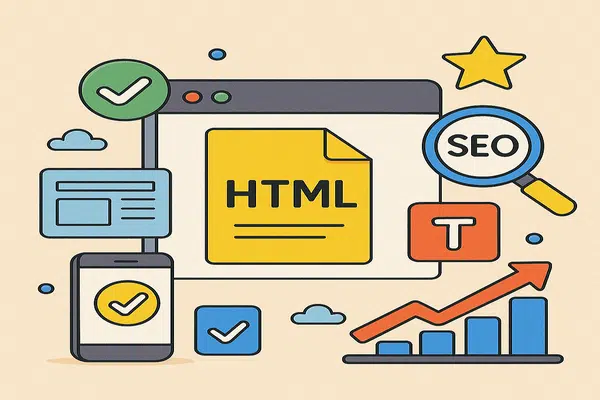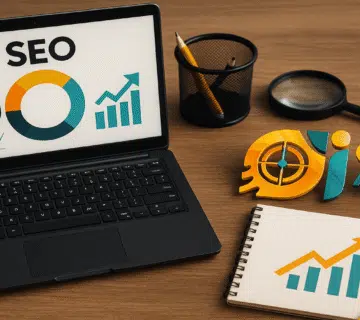How to Write Great Page Titles and SEO Headings
The Importance of Headlines in Digital Content
Headlines are a fundamental part of any digital content, playing a crucial role in capturing the reader’s attention and encouraging them to click to read more. The headline is the first element users interact with and forms their initial impression of the content, making it essential for the headline to be both compelling and descriptive. When crafted effectively, a headline can significantly increase the click-through rate (CTR), positively impacting website traffic.
From a search engine optimization (SEO) perspective, headlines are also central. Search engines like Google consider headlines when identifying and ranking content topics. A headline should include relevant keywords that users are actively searching for, making it a powerful tool for improving visibility in search results. Moreover, the headline serves as an internal anchor for the content, helping both users and search engines quickly understand the article’s main theme.
Beyond technical impacts, strong headlines also serve the reader’s needs. A clear, precise headline helps users make quick decisions about whether the content aligns with their interests. Therefore, headlines should be both enticing and informative, enhancing the overall user experience. In today’s fast-paced digital world, writers and editors must be deliberate and strategic in crafting headlines to effectively attract readers and increase engagement.

Qualities of a Strong Headline
A strong headline is essential for capturing reader attention and motivating them to engage with the content. It should be clear, accurately reflecting the page’s content without ambiguity. When writing a headline, complex language or obscure expressions should be avoided. Instead, headlines should be simple and direct, allowing readers to quickly grasp the message.
In addition to clarity, appeal plays a major role in a headline’s success. It should contain intriguing elements that spark curiosity. Techniques such as using questions, numbers, or surprising facts can significantly increase a headline’s attractiveness and reader interest.
Furthermore, the length of a headline should be kept short while maintaining meaning. Long headlines may be confusing or stray from the topic. Ideally, a headline should be between 50 to 60 characters, which also makes it more shareable across social media platforms and easier to display in search results.
As for relevance, the headline must align with the page content and include related keywords. This not only appeals to readers but also helps search engines properly index the content. Integrating target keywords naturally within the headline increases the chances of ranking higher in search results.
By focusing on these key qualities, content creators can craft powerful headlines that draw in readers and encourage them to dive deeper into the content.
SEO Optimization Strategies for Headlines
Page headlines are a core element of SEO. To achieve higher search rankings, effective strategies must be used to write headlines that attract visitors and improve the overall user experience. The first step in SEO optimization is conducting keyword research. This helps identify the most commonly searched terms by the target audience, aligning the headline with their needs.
Once keywords are selected, they should be naturally embedded in the headline text. Headlines must remain engaging and clear while avoiding over-optimization. It’s generally recommended to place the primary keyword at the beginning of the headline, as studies show this can enhance visibility in search results.
Another best practice is to use descriptive formats, such as numbers or questions, which increase curiosity. A headline that communicates a clear benefit—like solving a common problem—can significantly raise its click-through potential. Also, keeping the headline under 60 characters ensures it’s fully visible in search snippets.
Ultimately, effective SEO for headlines requires balancing reader engagement with search engine requirements. Combining in-depth keyword research with compelling design boosts the chances of creating a successful SEO strategy. Monitoring performance metrics and continuously optimizing based on analytics is key to achieving the best outcomes.

Examples of Successful Headlines and Their Analysis
Successful headlines are vital to the effectiveness of digital content. By analyzing strong examples, we can understand what makes them compelling and how they drive user engagement.
- Example 1: “10 Ways to Improve Your Productivity at Work”
This headline is successful because it combines a specific number of tips with a clear benefit (“improve productivity”). The word “improve” adds a positive tone, making it appealing to those seeking self-development. - Example 2: “How You Can Succeed in Your Personal Life”
This headline offers direct value to the reader. Phrases like “How You Can” suggest a helpful, instructional tone and make the reader curious to explore practical advice. It taps into a personal goal, which strengthens its emotional appeal. - Example 3: “Top Digital Marketing Strategies for 2023”
This headline targets professionals looking for updated insights. The word “Top” implies quality, while the inclusion of “2023” signals freshness and relevance, increasing credibility.
To ensure a headline’s success, focus on using strong action verbs, specific numbers, and clear value propositions. Adding curiosity-inducing phrases like “Discover” or “Learn How” makes headlines even more clickable.
By learning from these examples and applying the related principles, writers can craft highly effective, SEO-optimized headlines that resonate with audiences and increase conversions.




No comment